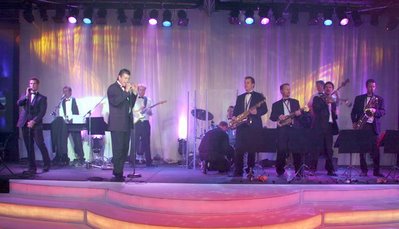In both these instances considerable areas of each CBD were “locked down” by Police, causing considerable disruption to traffic and access to public areas.
Now it is all happening again in Melbourne.
Assistant Commissioner Gary Jamieson told the media that police did not expect demonstrators to blockade the meeting venue, as they did at the 2000 WEF meeting at Crown Casino, but he could not guarantee delegates would be able to enter the hotel, located in the heart of Melbourne's central business district.
And get this – “Police had not been consulted on the choice of venue,” he said.
The G-20 Meeting is being hosted by the Federal Treasurer and funded by the Federal Government. Just imagine anyone else deciding to hold an event that is expected to disrupt the running of a major city and not consult the local police before booking the venue. How arrogant!
Here is how the event is being explained on the G-20 website…
Public Information about the G-20 Meeting of G-20 Finance Ministers and Central Bank Governors, Melbourne, Australia, 18–19 November 2006
This November, Melbourne will host the world’s most influential economic and financial leaders at the G-20 Meeting of Finance Ministers and Central Bank Governors. It will be the most significant gathering of its kind ever held in Australia.
Following the success of this year’s Commonwealth Games, Melbourne will again be at the centre of the world stage. Melbourne has proven its ability to deliver a truly world-class event and with the G-20 Finance Ministers and Central Bank Governors’ meeting in town, Melbourne will once again show the world what it has to offer.
The meeting will take place at the Grand Hyatt Melbourne and at several other venues around the city, showcasing the dynamic and cosmopolitan nature of Melbourne – sporting greatness, vibrant arts industry, successful business sector and the natural beauty that surrounds the city.
The meeting is likely to attract local and international interest, including possible demonstrations. As a result, it is expected that there will be some changes to a small area of the CBD however, most of the CBD will remain open for business as usual.
Location
The meeting will be held at the Grand Hyatt Melbourne. Its facilities will be closed to the public from 12 noon Wednesday, 15 November until 12 noon Tuesday, 21 November 2006.
Traffic and Roads Information
Security around the Grand Hyatt Melbourne, and the possibility of some protest activity, is expected to lead to some minor traffic disruptions. These will be clearly sign posted and up-to-date traffic information will be regularly communicated.
Don’t you just love the reference to “some minor traffic disruptions” when you see today’s news reports. And “showcasing the dynamic and cosmopolitan nature of Melbourne” with the Paris end of Collins St blocked off to traffic and pedestrians.
The 2002 WTO meeting was held at the Novotel Sydney Olympic Park – well away from the Sydney CBD and where the police had special powers under the Sydney Olympic Park Act to control protestors. Surely this is a much saner way to manage such events.
However Sydney’s turn will be next.
APEC is being staged this time next year in the Sydney Convention & Exhibition Centre. I got a taste of how some of this will be managed when I had to make a delivery to a client at the SIBOS conference at SCEC last month. The carpark under the exhibition was shutdown and the entire centre was restricted to those with appropriate accreditation. This is a venue that can handle that type of security. Although for APEC one would assume that the lockdown perimeter will be far more reaching.
A word on APEC.
Remember all the speculation some months ago about whether John Howard would stay until the next election? I kept saying that APEC was the reason that he would stay on. This will be the first time that a full APEC meeting will be held in Australia (it came out of an informal Ministerial-level dialogue group with 12 members in Canberra in 1989) and there would be no way Howard was not going to host it.
Let’s face it; he has to get his own back on previous hosts by dressing them in Ken Done shirts.
